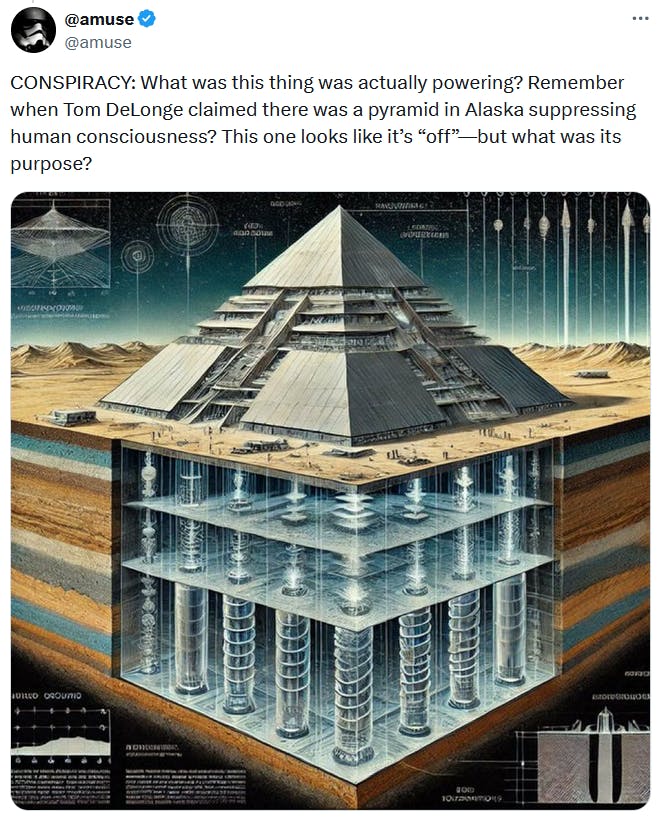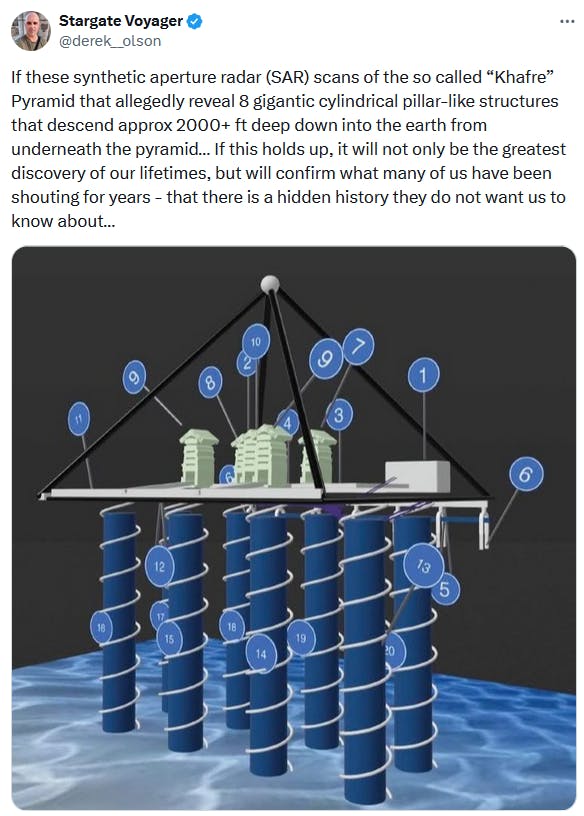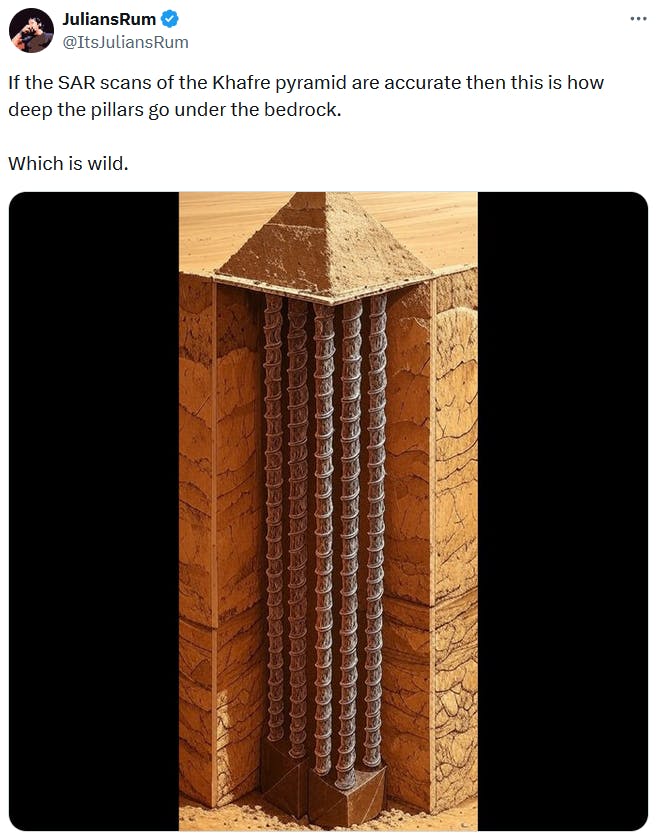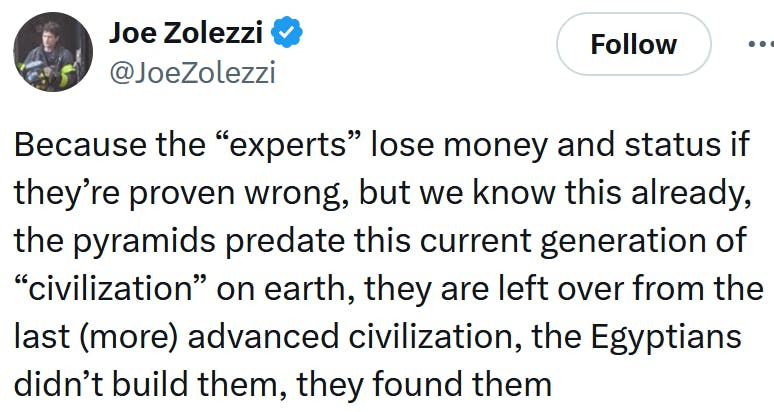A years-old theory claiming there is a massive underground city beneath Egypt’s Giza Pyramids is again exploding across social media. Fueled by AI-generated images and conspiracy theorists, and amplified by platform algorithms, these viral posts claim researchers used radar to uncover hidden chambers and spiral staircases deep below the ancient pyramids.
Archeologists and radar specialists are calling the claims impossible. Still, in an era where many dismiss expert debunkings as part of a cover-up, the theory is thriving—another example of how AI and internet hype keep breathing new life into long-debunked pyramid conspiracies.
What did researchers find beneath the Giza Pyramids in Egypt?
According to online reports, a group of Italian and Scottish researchers recently claimed that a vast underground city extends around 4,000 feet beneath the Pyramids of Giza, discovered via radar pulses. These allegedly include massive vertical shafts that hold spiral staircases, plus two huge chambers that have people abuzz about the fabled Halls of Amenti.
However, experts on radar and its use in archeology say that this tech is incapable of penetrating that deep into the earth.
Denver University’s Professor Lawrence Conyers told the Daily Mail that the city is likely “a huge exaggeration,” but that there could be small shafts and chambers beneath the pyramids. It wasn’t uncommon for ancient peoples to build pyramids and other massive structures on top of sacred ground, including where they buried their dead.

Fact-checking website Snopes couldn’t find an article in an academic publication or any decent source for these theories. As far as they can tell, it’s simply a new twist on dubious research from 2022 that right-wing podcasters like Alex Jones and Joe Rogan started pushing in mid-March for some reason. They therefore rated the claim as false.
Speaking with Decrypt, Egyptologist and historian Flora Anthony said the 2022 research didn’t impress her.
“Something seemed off, so I looked up the original source, read through it, and realized the paper had nothing to do with the images or claims being shared in the media,” she said. “Turns out, the article isn’t peer-reviewed. Someone familiar with the journal where the report was published said they publish quickly and aren’t established in the field—which matters since peer review is important.”
AI fuels the underground city Giza Pyramid theory
Theories about the mysterious Giza Pyramids of Egypt have fueled imaginations for many decades. Experts have debunked claims about legendary halls and chambers and treasures and aliens time and time again, but there’s something new in the mix this time—generative AI.

Never before has it been so easy for any random individual to create images that look cool or even kind of real to provide a visual representation of what the latest pyramid hype is claiming. Both true conspiracy theorists and those eager to get on the trend fast for clicks are producing digital images of these alleged columns and weird diagrams..
X user @derek__olson of the Stargate Voyager blog produced such a diagram for his more than 66,000 followers. It includes a representation of the columns allegedly beneath the pyramids as well as the surface structures. He labeled all these and other random parts of the image with numbers one through 20 without explanation.

“If this holds up, it will not only be the greatest discovery of our lifetimes, but will confirm what many of us have been shouting for years – that there is a hidden history they do not want us to know about,” he claims.
Why did they hide this from us? Derek doesn’t say, but it sure sounds and looks exciting if you don’t think about it too much. That might be why the post has 3.2 million views and 27,000 likes already.

If the technology is impossible—why is the internet convinced?
In the past, the nearly immediate detractions from various experts in related fields might have tempered the public’s excitement about the Egypt Giza Pyramids theory pretty quickly. However, in 2025, a large portion of social media users are expressing a frank distrust of anyone who uses the word “expert” to describe themselves.
Commenters on an X post by the New York Post warning that experts have debunked the researchers’ claims often rejected this part of the headline.

“Because the ‘experts’ lose money and status if they’re proven wrong, but we know this already, the pyramids predate this current generation of ‘civilization’ on earth, they are left over from the last (more) advanced civilization, the Egyptians didn’t build them, they found them,” says @JoeZolezzi.
“Same experts that have been wrong about everything for the last 60 years,” writes @MrBradInfluence.

According to the Pew Research Center, American views on science have declined in recent years. The proportion of polled individuals saying they have a great deal of trust in scientists fell from 39 percent in 2020 to 27 percent in 2023.
The internet is chaotic—but we’ll break it down for you in one daily email. Sign up for the Daily Dot’s web_crawlr newsletter here to get the best (and worst) of the internet straight into your inbox.


